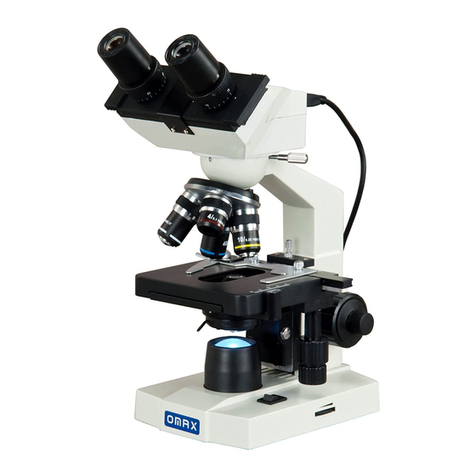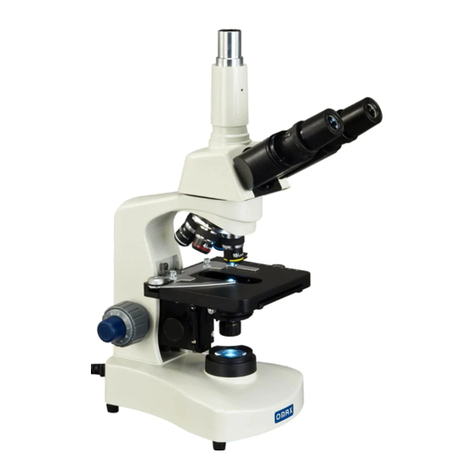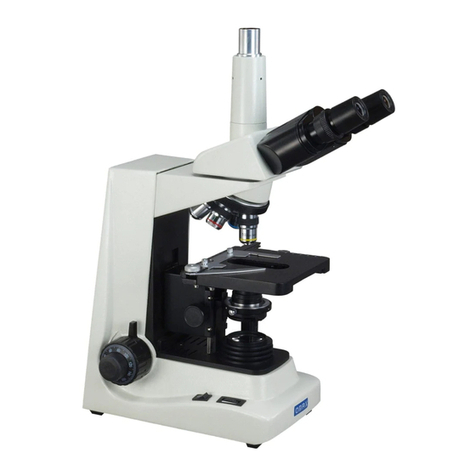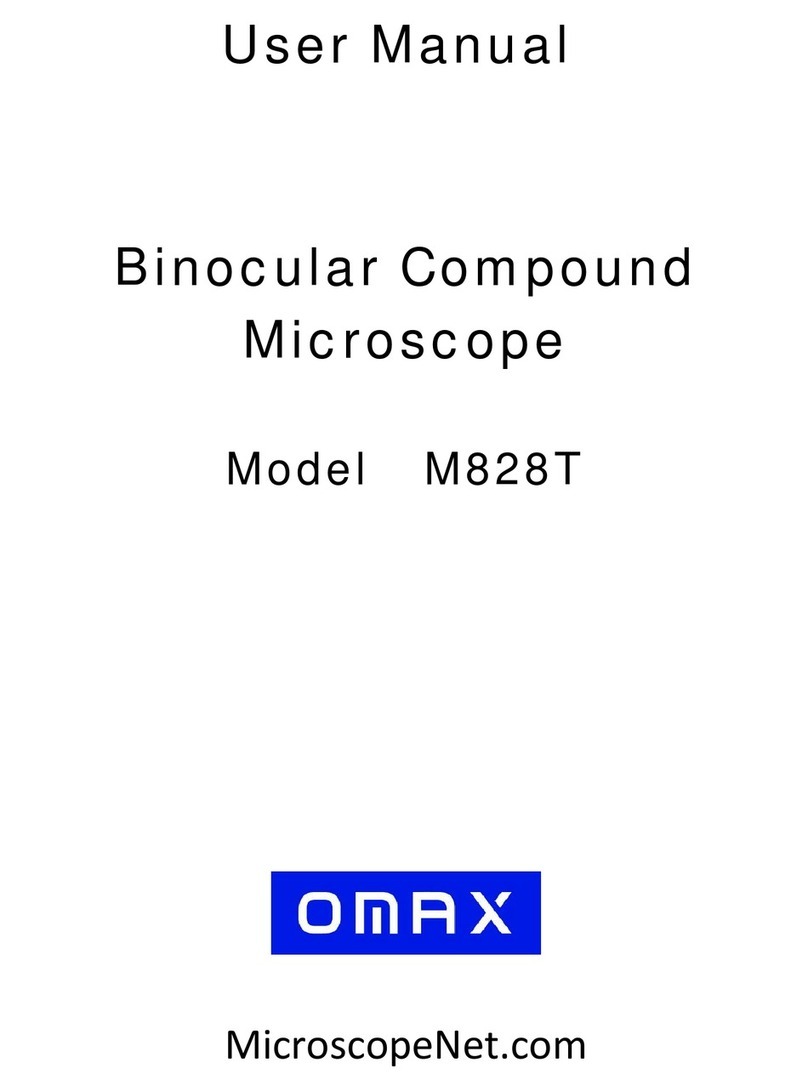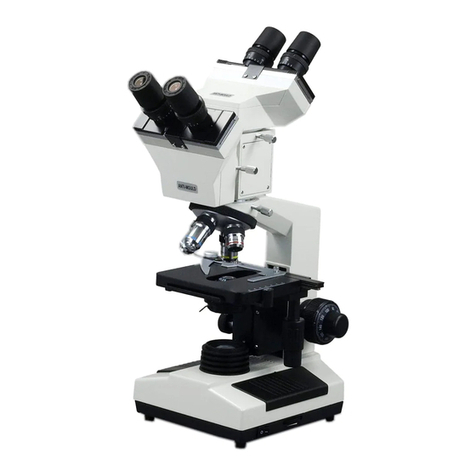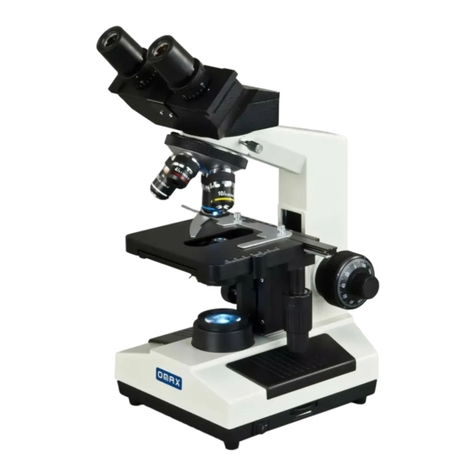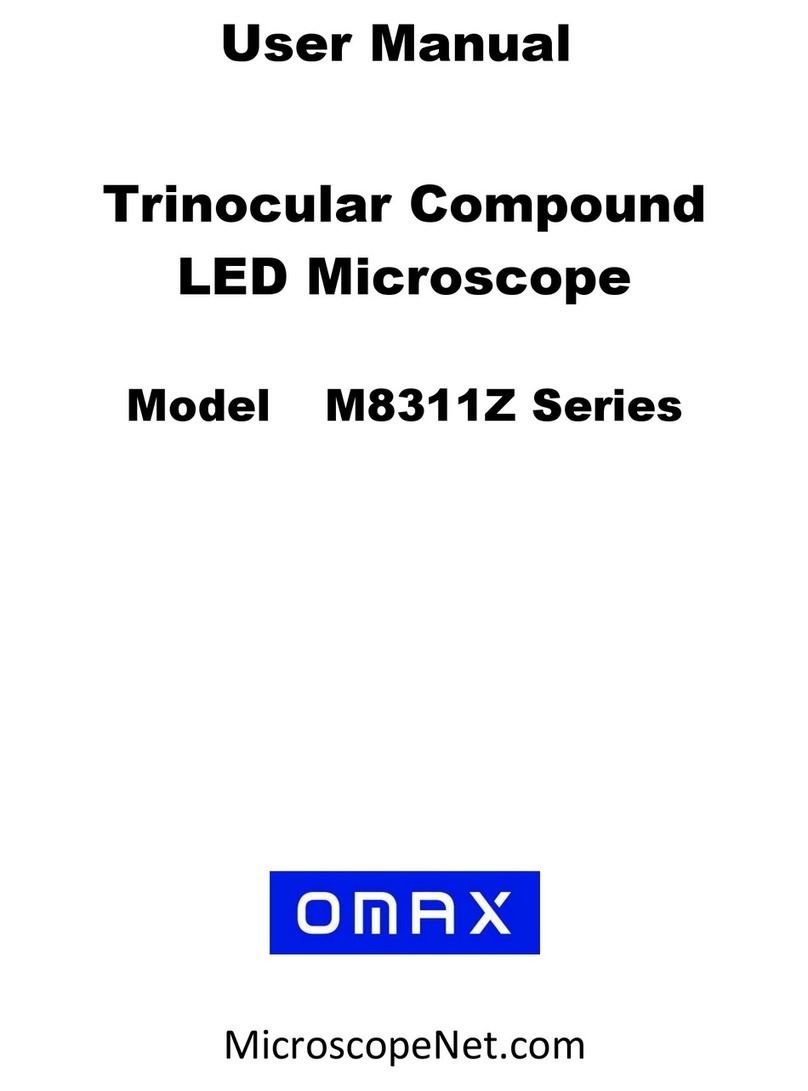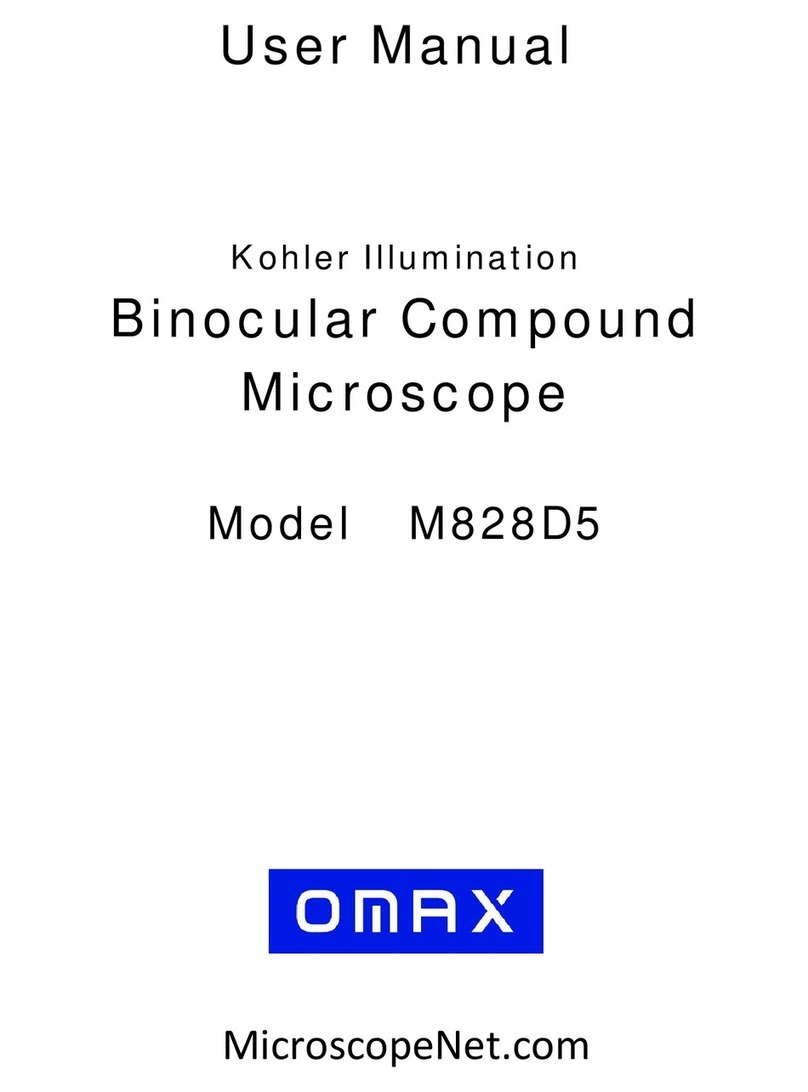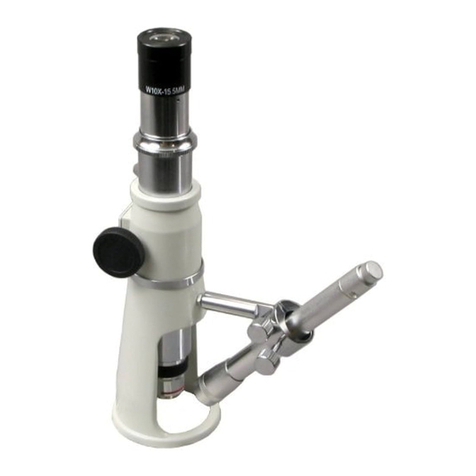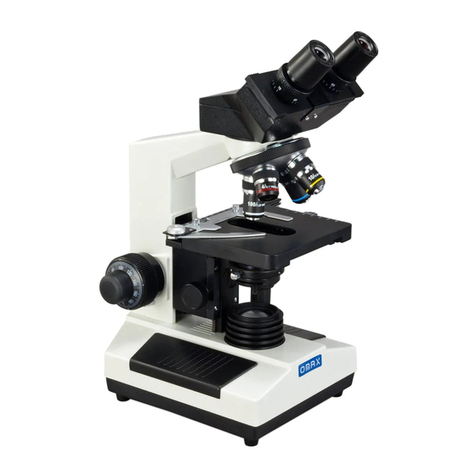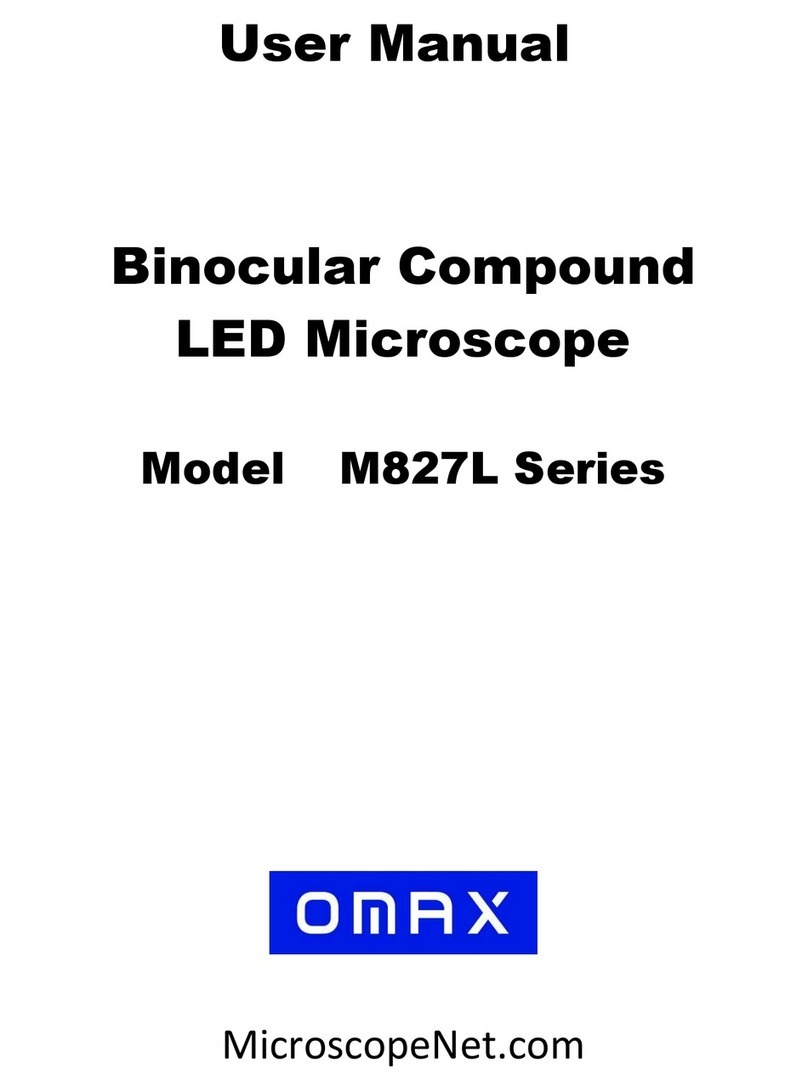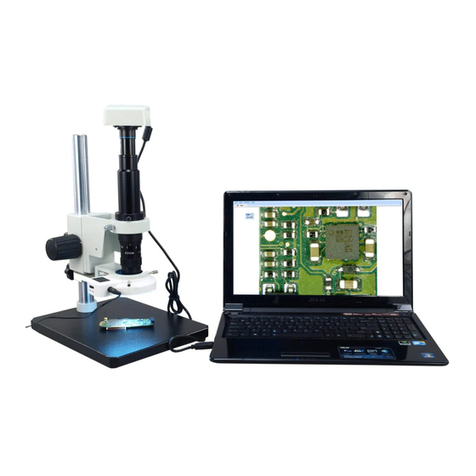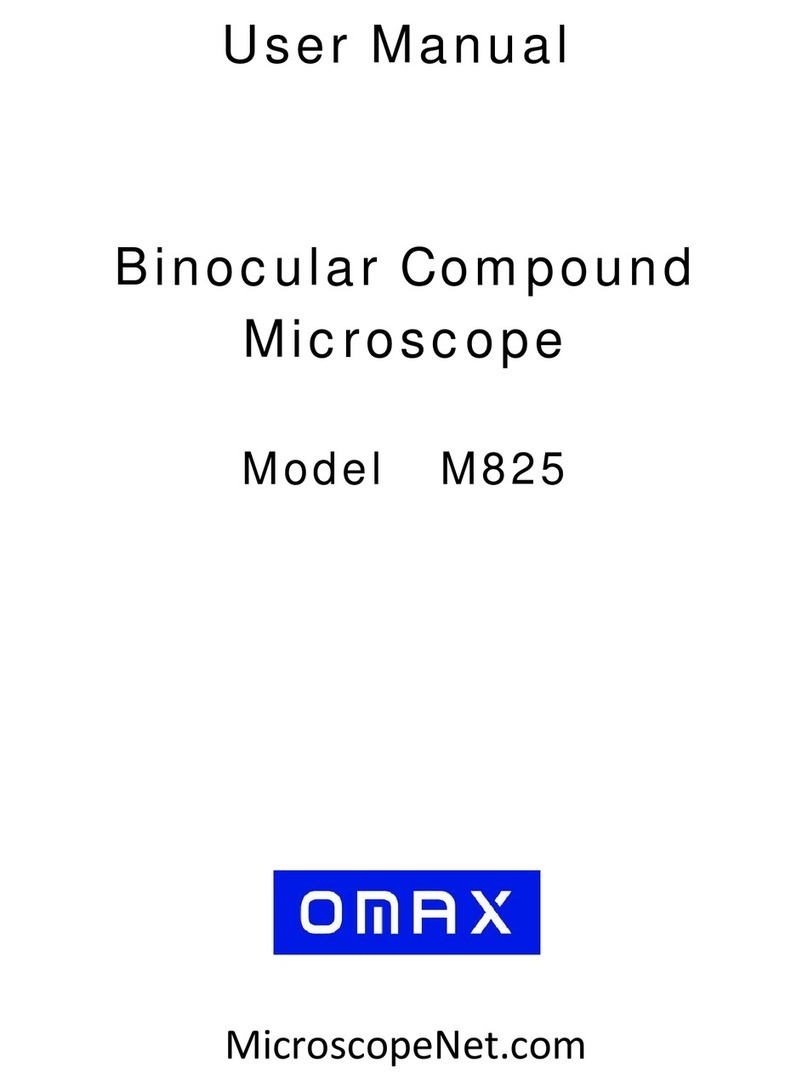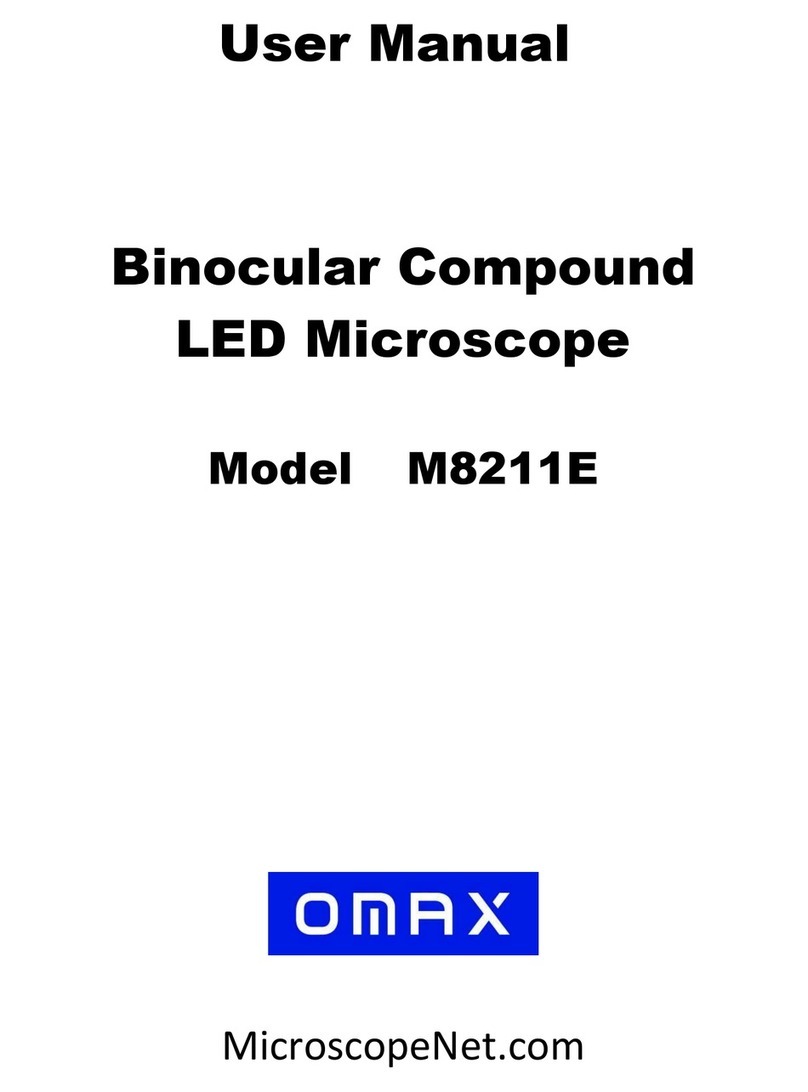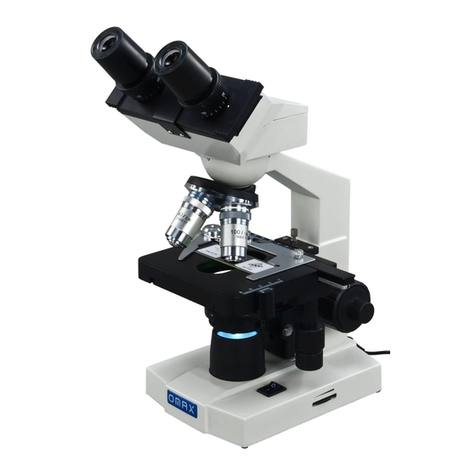
www.microscopenet.com
- 5 -
2. Operation
2.1 Adjusting illumination
1) Connect the power cord and turn on the main switch.
2) Rotate the variable intensity dial to increase or decrease the brightness.
2.2 Placing specimen
1) Place the slide on the mechanical stage.
2) Use the slide holder to gently secure the slide.
3) Turn the X and Y translational adjustment knobs to position the specimen for viewing.
Caution: Be sure not to allow an objective to touch a specimen slide when changing
objectives.
2.3 Focusing
1) With the 10x objective in position, raise the mechanical stage using the coarse focus
knob until the specimen is close to the objective.
2) Turn the coarse focus knob until the specimen is in focus.
3) Then use the fine focus knob to obtain a sharp image.
4) You may now switch to another magnification objective.
Tips: To prevent your specimen slide from making contact with an objective, raise the
stage to its highest position without contacting the 100x objective, then tighten the upper
limit mechanical stage lever.
2.4 Adjusting condenser
1) Turn the condenser focus knob to raise or lower the condenser.
2) The condenser is raised when using high magnification objectives and lowered when
using low magnification objectives.
Note:
The centering of the condenser and the light axis of the objective are factory
adjusted. Do not attempt re-adjustment.
The highest position of the condenser has been factory adjusted. Do not attempt
re-adjustment.
2.5 Adjusting iris diaphragm
Move the Iris Diaphragm Lever left or right to adjust the aperture size.
Note: The iris diaphragm is designed to adjust the aperture size, not to adjust
brightness. Generally, opening the diaphragm to 70-80% of the N.A. value of the
respective objective will provide an image of acceptable quality. If you want to observe
the image of the iris diaphragm, remove one eyepiece and look through the tube. You
will see a dark circle encroaching on the bottom of the tube.
2.6 Adjusting interpupillary distance
While observing with both eyes, hold the left and right eye tubes then slowly slide the
tubes in and out. The interpupillary distance is correct when the left and right fields of
view converge completely into one image.
2.7 Adjusting eyepiece diopter
1) Using the 10x objective and your right eye only, observe your specimen through the
